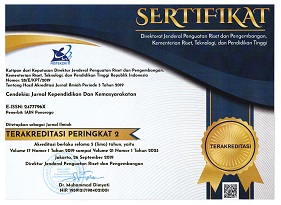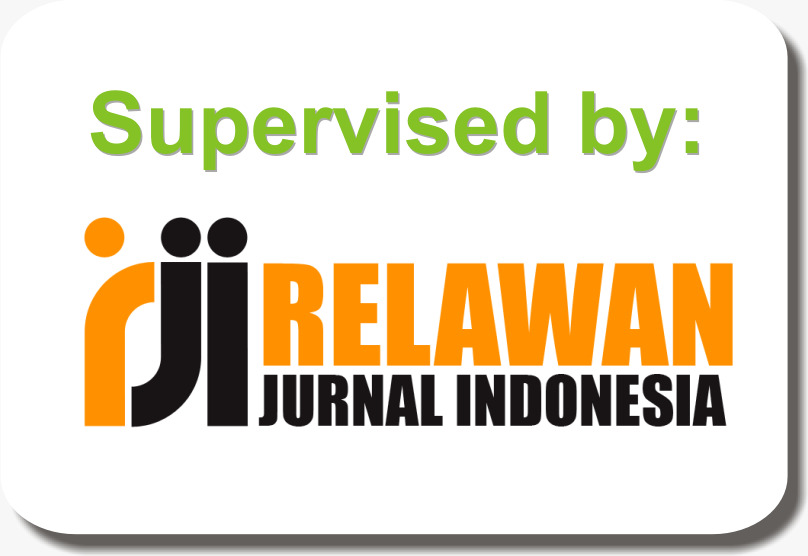Development of Children with Mental Disorders through Islamic Religious Education and Medical Approaches
DOI:
https://doi.org/10.21154/cendekia.v21i1.5965Keywords:
treatment of children, child mental disorders, medical approaches, Islamic educationAbstract
Mental disorders occur in Ponorogo, precisely in Paringan village, Jenangan. Based on researchers' observations, it was known that the number of mental disorders sufferers was 60 people, from children to adults. In Paringan village, a Mental Health Assistance Health Center was established in 2011. Some efforts dealing with mental disorders include promotion or prevention, curative (treatment), and rehabilitation. These three were implemented in the family, institution, and community environment. For psychiatry, it was done as early as possible, repeatedly and consistently, to be realized in life in the future. The research method used is qualitative, with a case study approach in Paringan Mental Health Support Health Center. Based on an analysis of various findings in the field, the researchers found that the Islamic Religious Education approach model for children with mental disorders was carried out by looking at the causes of children's mental disorders and the treatment and rehabilitation processes children received. It would become a reference for the next step, then determine and develop various forms of religious development activities under the conditions and characteristics of the child. Medical treatments in the coaching process would accompany them because this coaching was not a preventive but a corrective and preservative effort against mental disorders.References
AA, Nierenberg, Harris MG, Kazdin AE, Puac-Polanco V, Sampson N, dan Vigo DV. "Perceived Helpfulness of Bipolar Disorder Treatment: Findings from the World Health Organization World Mental Health Surveys." Bipolar Disord, 2021, 1”“19.
Al-Hasan, Yusuf Muhammad. Pendidikan Anak dalam Islam. Jakarta: Darul Haq, 1998.
Atkinson, Rita L., dkk. Pengantar Psikologi, terj: Introduction to Psychology. Batam: Interaksara, 2005.
Cloninger, dan Elliot. Genetic Approaches to Mental Disorders. Washington DC: American Psychiatric Press, 1994.
D, Vigo, Haro JM, Hwang I, Aguilar-Gaxiola S, Alonso J, dan Borges G. "Toward Measuring Effective Treatment Coverage: Critical Bottlenecks in Quality- and User-Adjusted Coverage for Major Depressive Disorder." Psychol Med, 2020, 1”“11.
G, Thornicroft, Chatterji S, Evans-Lacko S, Gruber M, Sampson N, dan Aguilar-Gaxiola S. "Undertreatment of People with Major Depressive Disorder in 21 Countries." BrJ Psychiatry 210(2) (2017): 119”“24.
Gordon, Thomas. Menjadi Orang Tua Efektif: Mendidik Anak Agar Bertanggung Jawab. Jakarta: PT Gramedia Pustaka Utama, 2009.
http://beritajatim.com/advetorial/298238/Desa_singkil_dengan_sejuta_kelebihan_represent_ponorogo_di_lomba_Desa_provinsi.html . Accessed August 12, 2022 at 20.00 WIB.
L, Levi, Bar Haim M, Burshtein S, Winter-Van Rossum I, Heres S, dan Davidson M. "Duration of Untreated Psychosis and Response to Treatment: An Analysis of Response in the Optimise Cohort." Eur Neuropsychopharmacol 32 (2020): 131”“35.
M, Harris, Kazdin AE, Chiu WT, Sampson NA, Aguilar-Gaxiola S, dan Al-Hamzawi A. "Findings from World Mental Health Surveys of the Perceived Helpfulness of Treatment for Patients with Major Depressive Disorder." JAMA Psychiat 77 (2020): 830”“41.
Mansur. Pendidikan Anak Usia Dini dalam Islam. Yogyakarta: Pustaka Pelajar, 2005.
Maramis, Willy F., dan Albert A. Maramis. Ilmu Kedokteran Jiwa Edisi 2. Surabaya: Airlangga University Press, 2009.
P, Cuiipers, Van Straten A, dan Smit F. "Preventing the Incidence of New Cases of Mental Disorders: A Meta-Analytic Review." J Nerv Ment Dis, no. 193 (2) (2005): 119”“25.
R, Mercieca-Bebber, King M, Calvert M, Stockler M, dan Friedlander M. "The Importance of Patient-Reported Outcomes in Clinical Trials and Strategies for Future Optimization." Patient Relat Outcome Meas 9 (2018): 353”“67.
S, Evans-Lacko, Aguilar-Gaxiola S, Al-Hamzawi A, Alonso J, Benjet C, dan Bruffaerts R. "Socio-Economic Variations in the Mental Health Treatment Gap for People with Anxiety, Mood, and Substance Use Disorders: Results from the WHO World Mental Health (WMH) Surveys." Psychol Med 48 (2018): 1560”“71.
SM, Schueller, Hunter JF, dan Aguilera A. "Use of Digital Mental Health for Marginalized and Underserved Populations." Curr Treat Options Psychiatry 6(3) (2019): 243”“55.
Sugiyono. Metode Penelitian Kuantitatif, Kualitatif dan R&D. Bandung: Alfabeta, 2004.
Suhaimi. “Gangguan Jiwa dalam Perspektif Mental Islam.” Jurnal Risalah Vol. 26, N (2015): 197”“205.
TE, Dorner, dan Mittendorfer-Rutz E. "Socioeconomic Inequalities in Treatment of Individuals with Common Mental Disorders Regarding Subsequent Development of Mental Illness." Soc Psychiatry Psychiatr Epidemiol 52(8) (2017): 1015”“22.
Ulwan, Abdullah Nashih. Pedoman Pendidikan Anak dalam Islam. Semarang: Asyifa, 1981.
Warastuti, Widya, dan Agus Otomo. “Deteksi Dini Kesehatan Jiwa Anak yang Mengalami Penurunan Prestasi Belajar.” Jurnal Keperawatan ISSN 2086-3071 Volume 4, (2013): 160.
Wicaksana, Inu. Mereka Bilang Aku Sakit Jiwa. Yogyakarta: Kanisius, 2008.
Yanuar, Rio. "Analysis of Factors Related to Mental Disorder Incidents at Paringan Village." Jurnal Fakultas Keperawatan Universitas Airlangga No. 2 (2015): 2.
Downloads
Published
Issue
Section
License
Copyright & License
Please find the rights and licenses in Cendekia: Jurnal Kependidikan dan Kemasyarakatan. By submitting the article/manuscript, the author(s) agree with this policy. No specific document sign-off is required.
1. License
The non-commercial use of the article will be governed by the Creative Commons Attribution license as currently displayed on the Creative Commons Attribution-NonCommercial 4.0 International License.
2. Author(s)' Warranties
The author warrants that the article is original, written by the stated author(s), has not been published before, contains no unlawful statements, does not infringe the rights of others, is subject to copyright that is vested exclusively in the author and free of any third party rights, and that any necessary written permissions to quote from other sources have been obtained by the author(s).
3. User/Public Rights
The spirit of Cendekia: Jurnal Kependidikan dan Kemasyarakatan is to disseminate articles published as free as possible. Under the Creative Commons license, Cendekia: Jurnal Kependidikan dan Kemasyarakatan permits users to copy, distribute, display, and perform the work for non-commercial purposes. Users will also need to attribute authors and Cendekia: Jurnal Kependidikan dan Kemasyarakatan on distributing works in the journal and other media of publications. Unless otherwise stated, the authors are public entities as soon as their articles got published.
4. Rights of Authors
Authors retain all their rights to the published works, such as (but not limited to) the following rights;
- Copyright and other proprietary rights relating to the article, such as patent rights,
- The right to use the substance of the article in own future works, including lectures and books,
- The right to reproduce the article for own purposes,
- The right to self-archive the article,
- The right to enter into separate, additional contractual arrangements for the non-exclusive distribution of the article's published version (e.g., post it to an institutional repository or publish it in a book), with an acknowledgment of its initial publication in this journal (Cendekia: Jurnal Kependidikan dan Kemasyarakatan).
5. Co-Authorship
If the article was jointly prepared by more than one author, any author submitting the manuscript warrants that he/she has been authorized by all co-authors to be agreed on this copyright and license notice (agreement) on their behalf and agrees to inform his/her co-authors of the terms of this policy. Cendekia: Jurnal Kependidikan dan Kemasyarakatan will not be held liable for anything arising due to the author(s) internal dispute. Cendekia: Jurnal Kependidikan dan Kemasyarakatan will only communicate with the corresponding author.
6. Royalties
Being an open accessed journal and disseminating articles for free under the Creative Commons license term mentioned, the author(s) are aware that Cendekia: Jurnal Kependidikan dan Kemasyarakatan entitles the author(s) to no royalties or other fees.
7. Miscellaneous
Cendekia: Jurnal Kependidikan dan Kemasyarakatan will publish the article (or have it published) in the journal if the article's editorial process is completed. The editors of Cendekia: Jurnal Kependidikan dan Kemasyarakatan may modify the paper to a style of punctuation, spelling, capitalization, referencing, and usage that deems appropriate. The author acknowledges that the article may be published so that it will be publicly accessible, and such access will be free of charge for the readers, as mentioned in point 3.

















